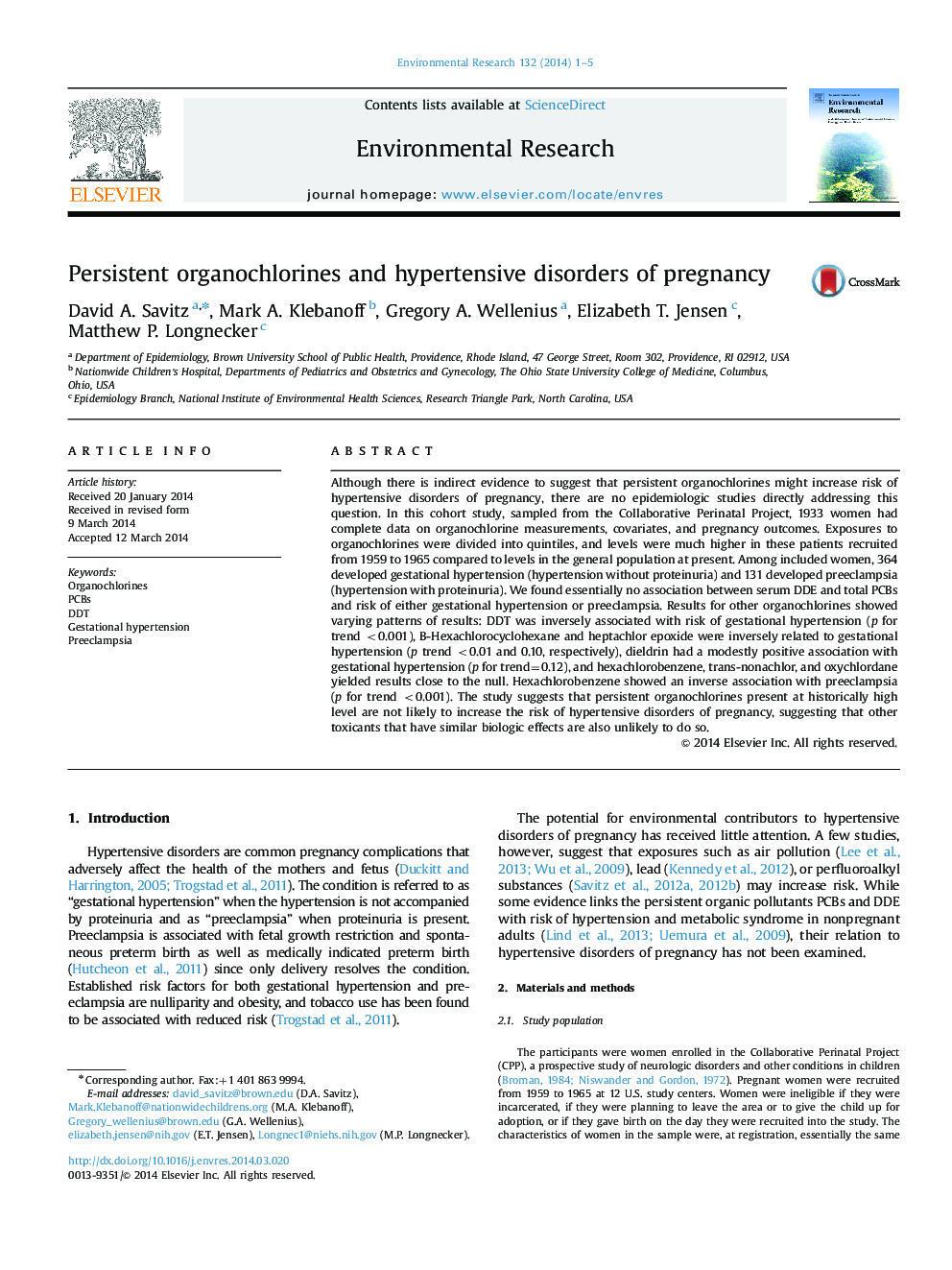| Article ID | Journal | Published Year | Pages | File Type |
|---|---|---|---|---|
| 6352934 | Environmental Research | 2014 | 5 Pages |
Abstract
Although there is indirect evidence to suggest that persistent organochlorines might increase risk of hypertensive disorders of pregnancy, there are no epidemiologic studies directly addressing this question. In this cohort study, sampled from the Collaborative Perinatal Project, 1933 women had complete data on organochlorine measurements, covariates, and pregnancy outcomes. Exposures to organochlorines were divided into quintiles, and levels were much higher in these patients recruited from 1959 to 1965 compared to levels in the general population at present. Among included women, 364 developed gestational hypertension (hypertension without proteinuria) and 131 developed preeclampsia (hypertension with proteinuria). We found essentially no association between serum DDE and total PCBs and risk of either gestational hypertension or preeclampsia. Results for other organochlorines showed varying patterns of results: DDT was inversely associated with risk of gestational hypertension (p for trend <0.001), B-Hexachlorocyclohexane and heptachlor epoxide were inversely related to gestational hypertension (p trend <0.01 and 0.10, respectively), dieldrin had a modestly positive association with gestational hypertension (p for trend=0.12), and hexachlorobenzene, trans-nonachlor, and oxychlordane yielded results close to the null. Hexachlorobenzene showed an inverse association with preeclampsia (p for trend <0.001). The study suggests that persistent organochlorines present at historically high level are not likely to increase the risk of hypertensive disorders of pregnancy, suggesting that other toxicants that have similar biologic effects are also unlikely to do so.
Related Topics
Life Sciences
Environmental Science
Health, Toxicology and Mutagenesis
Authors
David A. Savitz, Mark A. Klebanoff, Gregory A. Wellenius, Elizabeth T. Jensen, Matthew P. Longnecker,
